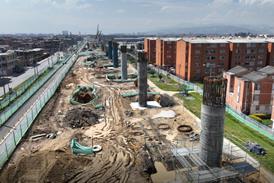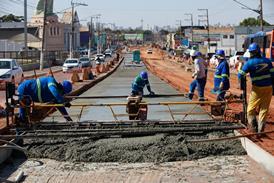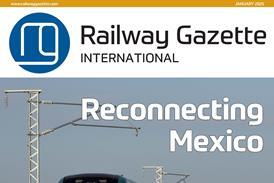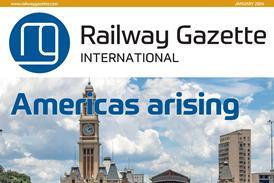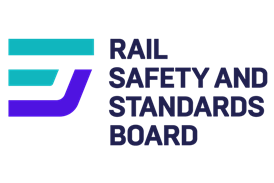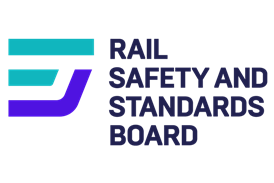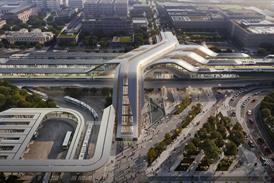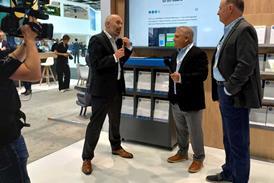APART from a 6 km section close to the Belgian border where ballasted track is used, HSL-Zuid will have ballastless track throughout.
On the basis of an evaluation of track types using a direct fastening system as a reference (RG 12.00 p819), Infraspeed BV chose the Rheda 2000¨ design as patented by Pfleiderer Infrastrukturtechnik and installed on high speed lines in Germany. This has been modified to suit the conditions of the Dutch line, which, for example, limits the construction depth for the track structure to 240mm on level straight track, with a further 240 mm to the top of the rail head.
As the main contractor for the project, Infraspeed is responsible for supplying and installing track, signalling, overhead line equipment, fencing, sound barriers and maintenance yards. The construction period lasts for five years, after which an Infraspeed subsidiary will be responsible for maintenance during the 25-year operating period. Total value of the 30-year contract is about €1·2bn, of which the trackwork element is around 20%.
Double track is to be provided throughout, and the total length of ballastless plain line is 80·5 km. To this must be added the length of switches: there are 16 high speed turnouts being supplied by BWG on the ballastless sections, with a further four on the ballasted track. In addition, two shorter turnouts on the ballastless section and four on the ballasted track provide access to maintenance yards.
In a back-to-back contract the trackwork was assigned by BAM Infraprovider vof to a joint venture called Rheda 2000 vof. This consists of BAM Civiel, BAM Rail and Pfleiderer Track Systems BV, whose role is to contribute know-how, engineering expertise, construction and logistics planning, plus quality assurance and control.
Construction is in principle carried out by the Dutch partners, including laying, welding, adjusting and grinding the long rails supplied by Voest. All the partners share the risks during the construction phase in equal parts, and hold responsibility for warranties after the line becomes operational. Around 260000 twin-block sleepers are being supplied from Pfleiderer’s factory in Coswig, near Dresden, to the B355·1 NL V60M design, which has been certified under the TSI for high speed lines.
Ground conditions required that much of the route be built on piled structures, with piles in some cases being 15 to 25m deep. Tunnels, viaducts, elevated sections and cuttings mean that no less than 54·4 km of the alignment makes use of structures with settlement-free plates, which are from 24 to 32m long. It was this feature in particular that required adaptation of the German Rheda 2000¨ design. An exception is a 13·2 km section on embankment on the southern part of the route where the design is comparable to that in Germany.
Specially-developed equipment was used for tracklaying, which Rheda 2000 vof says has progressed ’at an average rate of 300m a day’. Around one-third of all the track had been laid by the beginning of March.
An unusual aspect of the track design was the requirement to make provision for a derailment prevention system. This was specified as a result of an assessment carried out as part of Infraspeed’s safety case, which concluded that derailment prevention was needed on 52% of the line, essentially in curves, on viaducts and in tunnels. The system consists of a continuous concrete plinth between the rails. The plinth will be about 500mm wide and 170mm high, measured from the top of the slab track surface. To support the extra mass, special reinforcement was required in the main slab.
CAPTION: This Sersa welding machine is being used to weld long rails on the Noord-Brabant section of HSL-Zuid Photos: Detlef Obieray/Rheda 2000 vof
CAPTION: Rheda 2000 ballastless track and a Type H turnout providing the connection from the easternmost track to Breda, where HSL-Zuid parallels the existing ProRail main line


